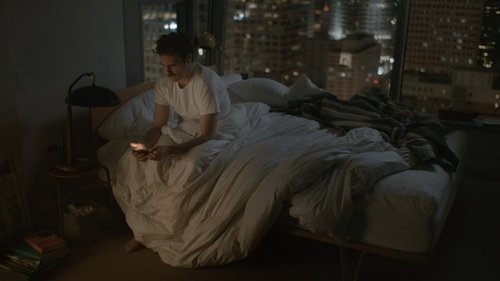This review was originally written in June 2014. The images are from the film and are not my own.
People are conflicting, confounding, and confusing. Our interactions with them reveal a fundamental problem with our very core. Some of us try to ignore confronting this problem by distractions. Others bury it in resentment. A few take a more desperate action, what some might call crazy but what could actually be an honest response to the predicament. Robyn Davidson (Mia Wasikowska) was one of these people, a spirited young Australian who was inspired and driven to do a feat that had everyone shaking their heads. Her goal: walk across the Australian outback by herself, using four camels and accompanied only by her dog.
Of course, a film like this has to be based on a true story, first recorded in a 1978 National Geographic article and later a book by Davidson. And like any episodic travel film, there are challenges that come with such a territory. The film tackles these challenges in a frustrating mixture of half heartedness and visual creativity. The half heartedness came from attempting to check off the boxes we expect in a film about such a wilderness journey; Robyn loosing her compass, or being attached by the wild bull camels, or getting to know the local aboriginals. Another challenge is the recurring scenery, but here the photography prevailed, finding creative ways to show the austerity of the desert, focusing on its shadows, its negative space, its heat and its whiteness.
But even if this territory felt flat, the grace and grit of Mia Wasikowska’s character holds and sustains our interest. Robyn is fascinating. Why would this slender willow of a woman tackle such a harsh landscape, peppered with such harsh people? Wasikowska’s face holds continued appeal as she attempts to read the people and environments she throws herself into. We are aware of every slimmer of loathing and longing that battle within her.
For it is people that she is trying to escape from, almost to prove that she is tough enough to be without those who betrayed her in the past. She tries to avoid those who pry into the curiosity of her journey. She shuns people who follow her, seeking to be alone with her animals But Robyn soon finds that a journey like hers requires the support of people. People to her train her camels, people to guide her during the roughest territory, and people to provide funding. And it is because of their contribution to this funding, National Geographic sends along Rick Smolan, played with a charming awkwardness by Adam Driver. Robyn dislikes him, for genuine reasons. He is pries too much and nearly ruins sections of her journey. He is annoying but can not be ignored.
In the end, when the animals she loves dearest are taken from her, Robyn cracks under the weight of loneliness. The arid, white desert that she wanders through is empty and void of humanity and the few humans she encounters treat her like an oddity. As she continues her solitary quest, a sort of shock sets in. In one scene Robyn sets huddled under the blackness of the outback, her terrified eyes and sunburnt face illuminated only by her fire. Out of the darkness comes a stranger, talking cheerfully yet unceasingly, his face shrouded in a racing helmet, bright as clown’s. “F*ck man, it's cold out here” he drawls, warming his hands by her fire. She is terrified of his harmless appearance and as he leaves his statement rings with truth. This world and its inhabitants are cold.
And yet there is something that can overcome this coldness and loneliness that accompanies it. There is a kindness that breaks through, persistent despite Robyn’s retreat. Strangers, themselves alone in this wilderness, take her in and offer her fellowship. Others, putting their own needs behind, guide her through the toughest sections of her journey. And one in particular goes out of his way to provide for her needs and celebrate her successes. It is this kindness that stands out against the harshness of the world and reveals the glimmer of hope still offered.






